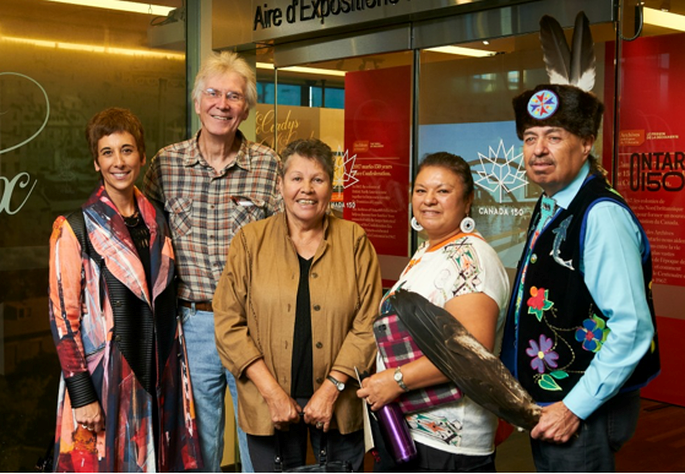NEWS RELEASE
ALGOMA UNIVERSITY
**********************
As Canada gets ready to mark the 150th anniversary of Confederation and the creation of the Province of Ontario, the Archives of Ontario has unveiled a special exhibition titled “Family Ties: Ontario Turns 150” in Toronto, Ontario. One of the families highlighted in the exhibition is the family of Chief Shingwauk.
“Family Ties: Ontario Turns 150” explores the era of Confederation through the stories of four family groups in Ontario, and how their lives intersected with larger historical forces of the period.
The exhibit uses reproductions of images, textual records, and artefacts from the Archives of Ontario and other institutions across the province to show multiple perspectives in Ontario during the late nineteenth-century. The exhibit also includes a look at how Ontario celebrated the centennial anniversary of Confederation in 1967.
The four key families or people of influence who are identified in the exhibit include George Brown, Nasa and Permelia McCurdy, the Wolverton family, and Chief Shingwauk. Records, photographs, and artefacts on the Shingwauk family came from the Shingwauk Residential School Centre‘s (SRSC) vast collection located on the campus of Algoma University.
“As part of the process of reconciliation, we wanted to include a story to educate our visitors about the impact of Confederation on Indigenous peoples, including the establishment of residential schools. The Families of Shingwauk section of our Family Ties exhibit includes records and content from the Shingwauk Residential Schools Centre, and allows the Archives of Ontario a chance to fulfill our leadership role in supporting the promotion of smaller Ontario archives,” said Jay Young, Curator at the Archives of Ontario.
“The inclusion of images, artefacts, and documents from the Shingwauk Residential Schools Centre in the Archives of Ontario’s Ontario 150 exhibit signifies the important history that has occurred in our region. As well, the exhibit is a testament to the vision, resilience, and determination of the Children of Shingwauk Alumni Association in gathering and sharing this history for many decades, as a grass roots organization, long before anyone conceived of the Truth and Reconciliation Commission,” said Algoma University Librarian and Archivist, Ken Hernden.
To celebrate the opening of “Family Ties, Ontario Turns 150”, a delegation of Algoma University and Shingwauk Kinoomaage Gamig (SKG) staff attended the Archives of Ontario’s launch.
Included in the delegation were Board of Governors’ Chair Asima Vezina, Chancellor Shirley Horn, SKG President Darrell Boissoneau, and retired professor and Co-Founder of the Shingwauk Project, Don Jackson.
The exhibition runs from September 2016 through to May 2018. For more information, please click here
Algoma University
Algoma University was established in 1965 and is located in Sault Ste. Marie, Ontario. Algoma University is a small, undergraduate, teaching-focused university that places an emphasis on serving the needs of Northern Ontario.
Algoma University offers a wide range of degrees spanning the liberal arts, sciences, and professional disciplines. As a partner with Shingwauk Kinoomaage Gamig, Algoma University has a special mission to cultivate cross-cultural learning between Aboriginal populations and other communities.
Algoma University also offers satellite programming in Brampton and Timmins. For more information, please visit www.algomau.ca
About the Shingwauk Residential Schools Centre
The Shingwauk Residential Schools Centre is a cross-cultural research and educational development project of Algoma University, the Children of Shingwauk Alumni Association, and the National Residential School Survivor Society.
Shortly after the closure in 1970 of the Shingwauk Indian Residential School, and in the early years of Algoma University College’s relocation to the present site, Residential School Survivors connected to the Shingwauk School, their families and communities, and their allies were catalysts in the growing Healing Movement, culminating in the introduction of the original Shingwauk Project in 1979 and the 1981 Shingwauk Reunion.
From these watershed events began the decades-long work of collecting, organizing and displaying photographs and other Residential School materials, conducting research, and educating the public that led to the establishment of the Children of Shingwauk Alumni Association and the Shingwauk Project, now known as the Shingwauk Residential Schools Centre, respectively. For more information, please visit shingwauk.org
**********************
